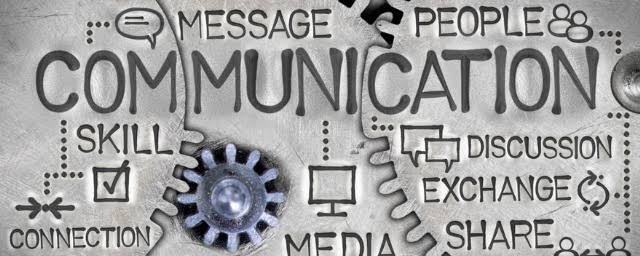Education
Non-Verbal Communication As A Tool For Effective Teaching

Non-verbal communication encompasses all other means of conveying a message aside from the use of words. In the words of Edward Sapir, non-verbal communication is an elaborate secret code that is written nowhere, known by none, and understood by all.
It is difficult to make a complete list of non-verbal communication modes. Even silence which has been described to be golden is a non-verbal communication code. While none of these two forms of communication is more important than the other, non-verbal communication has been described to come with accuracy and specificity because it boosts intent, meaning and nuances (Okolo, 2019).
In fact, many empirical studies have shown that non-verbal communication conveys meaning with greater exactitude. Bellurdi (2018) argues that non-verbal communication levels up to 70% while verbal communication generates 30% of the message in communication. While this piece does not set out to prioritise non-verbal communication over verbal mode, it hopes to establish that non-verbal communication is highly integral to decoding messages, especially in a classroom context. As such, the rest of this article will highlight some forms of non-verbal communication and discuss their relevance to teaching and learning. Lastly, the piece will touch on some barriers to non-verbal communication in a classroom situation.
Eight forms of non-verbal communication have been identified by scholars. One can combine two or more of these different forms for a clearer message. The first form of non-verbal communication is the face. The face suggests a person’s mood at any point in time, thereby revealing boredom, happiness, excitement, frustration and so on. The face is so important that it can affirm or debunk spoken language. When a person claims to be happy, for instance, the face tells if such a claim is true. The eyes also constitute an independent form of non-verbal communication.
RECOMMENDED: The Essentials Of Communication By Ganiu Bamgbose, PhD
Although found within the face, the eyes can be specifically used to communicate through intensity, blinking and length of time. The gesture which involves the movement of the hands is also important to communication. Gestures such as swinging, clapping and counting aid communication and help to avoid boredom. Movement is another non-verbal communication. It helps to break psychological space barriers. Moving close to listeners during speech delivery can help achieve greater attention, although it must be well managed, as movement may be suggestive of effrontery in some other situations.
Appearance is another non-verbal communication mode which plays a significant role in the psyche of the listeners. A person’s clothing, neatness and hairstyle can greatly influence the readiness of others to listen to him/her and can also determine the listeners’ assessment of him/her. Posture is another important non-verbal communication mode. A speaker should not be mindless of his/her posture. Posture which deals with how you hold your head, shoulders and hips to communicate can be suggestive of a speaker’s authority and firmness.
Touch is another form of non-verbal communication which manifests through handshakes, holding of hands and a pat on the back. This is often deployed by preachers to create intimacy with their congregations and get their attention. Lastly, voice is another form of non-verbal communication. This might sound confusing, given its closeness to verbal communication. Aspects of voice such as tone, pace, volume, pitch and loudness are extra spices on verbal communication, which can be creatively used by a speaker.
Related Articles
- Pronouns And Their Intricacies
- Expressing Etiquette In English
- She Likes Rice, Doesn’t She?: Tag Questions In English
The deployment of non-verbal communication has been described as one of the important ways to achieve classroom objectives. Empirical studies have revealed that body language aids communication to as much as 65% compared to verbal communication of 35% (Belludi, 2008; Okolo, 2019). When teachers do not exhibit appropriate non-verbal communication, it reduces students’ confidence and interest in subjects. Specific non-verbal communication can be deployed by teachers in classroom settings. A smiling face, for instance, could show friendliness, gratitude and joy, which positively positions the students for learning.
Also, movements and postures help capture students’ attention. Standing at a spot gets the students’ eyes fixed and may cause them to sleep or lose interest in the lecture. Appearance endears teachers to students, so it is important to appear attractive always. Appearance encompasses personal hygiene, style and colour which all boost students’ motivation and zeal. Voice is also significant in achieving effective teaching. A teacher should balance his/her voice such that the people in front do not feel the teacher is shouting, and the ones at the back should also find it easy to get the message. The voice should be appropriately modulated, and the pitch should be varied to suit different class situations.
Notably, non-verbal cues could serve a contrary purpose if not well managed. For example, gazing regularly at a shy student could make him/her feel uneasy and unable to follow the teaching. A teacher who loves to move around and touch students also has to be sensitive to the likes and dislikes of the students. A student who does not like to be touched could be uncomfortable if the teacher touches him/her frequently. It is also important to be mindful of every setting in the deployment of non-verbal communication. A formal presentation as a keynote speaker in an event might not warrant much movement, many touches and some other non-verbal communication modes.
In conclusion, non-verbal communication modes are useful, yet they are underutilised teaching resources. This piece is, therefore, an exposition of the relevance of non-verbal communication for pedagogical purposes.
© 2022 Ganiu Abisoye Bamgbose (Dr GAB)
Department of English,
Lagos State University





